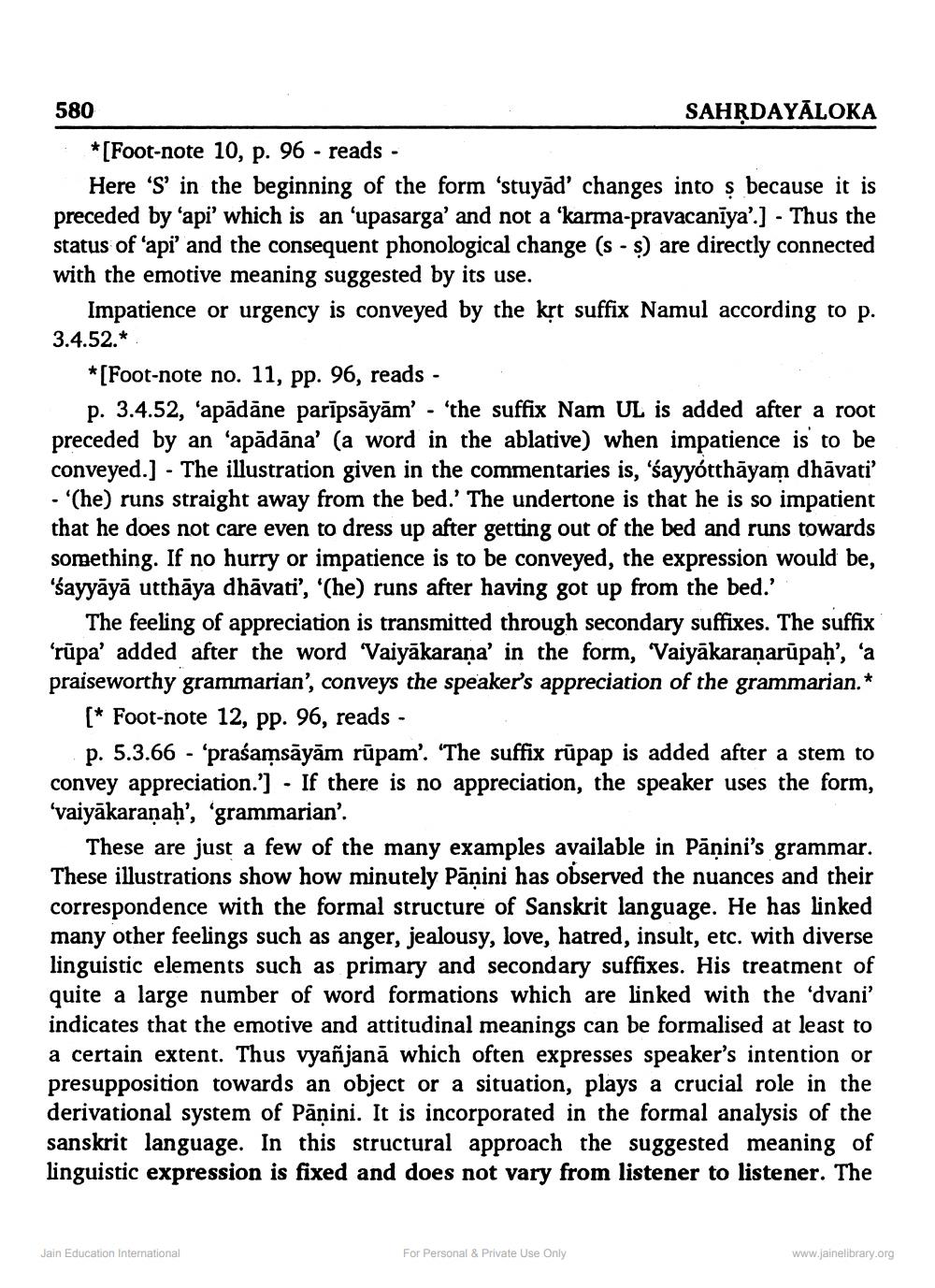________________
580
SAHRDAYĀLOKA *[Foot-note 10, p. 96 - reads -
Here 'S' in the beginning of the form 'stuyād' changes into ş because it is preceded by 'api' which is an 'upasarga' and not a 'karma-pravacanīya'.] - Thus the status of 'api' and the consequent phonological change (s - $) are directly connected with the emotive meaning suggested by its use.
Impatience or urgency is conveyed by the křt suffix Namul according to p. 3.4.52.*
*[Foot-note no. 11, pp. 96, reads
p. 3.4.52, 'apādāne parīpsāyām' - 'the suffix Nam UL is added after a root preceded by an 'apādāna' (a word in the ablative) when impatience is to be conveyed.] - The illustration given in the commentaries is, 'sayyótthāyam dhāvati' - '(he) runs straight away from the bed.' The undertone is that he is so impatient that he does not care even to dress up after getting out of the bed and runs towards something. If no hurry or impatience is to be conveyed, the expression would be, 'sayyāyā utthāya dhāvati', '(he) runs after having got up from the bed.'
The feeling of appreciation is transmitted through secondary suffixes. The suffix ‘rūpa' added after the word Vaiyakarana' in the form, Vaiyakaranarūpaḥ', 'a praiseworthy grammarian', conveys the speaker's appreciation of the grammarian.*
(* Foot-note 12, pp. 96, reads -
p. 5.3.66 - 'prašamsāyām rūpam'. 'The suffix rūpap is added after a stem to convey appreciation.') - If there is no appreciation, the speaker uses the form, 'vaiyākaraṇaḥ', 'grammarian'.
These are just a few of the many examples available in Pāṇini's grammar. These illustrations show how minutely Pāṇini has observed the nuances and their correspondence with the formal structure of Sanskrit language. He has linked many other feelings such as anger, jealousy, love, hatred, insult, etc. with diverse linguistic elements such as primary and secondary suffixes. His treatment of quite a large number of word formations which are linked with the 'dvani' indicates that the emotive and attitudinal meanings can be formalised at least to a certain extent. Thus vyañjanā which often expresses speaker's intention or presupposition towards an object or a situation, plays a crucial role in the derivational system of Pāņini. It is incorporated in the formal analysis of the sanskrit language. In this structural approach the suggested meaning of linguistic expression is fixed and does not vary from listener to listener. The
Jain Education International
For Personal & Private Use Only
www.jainelibrary.org




